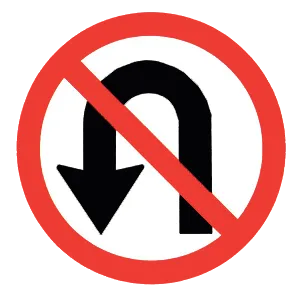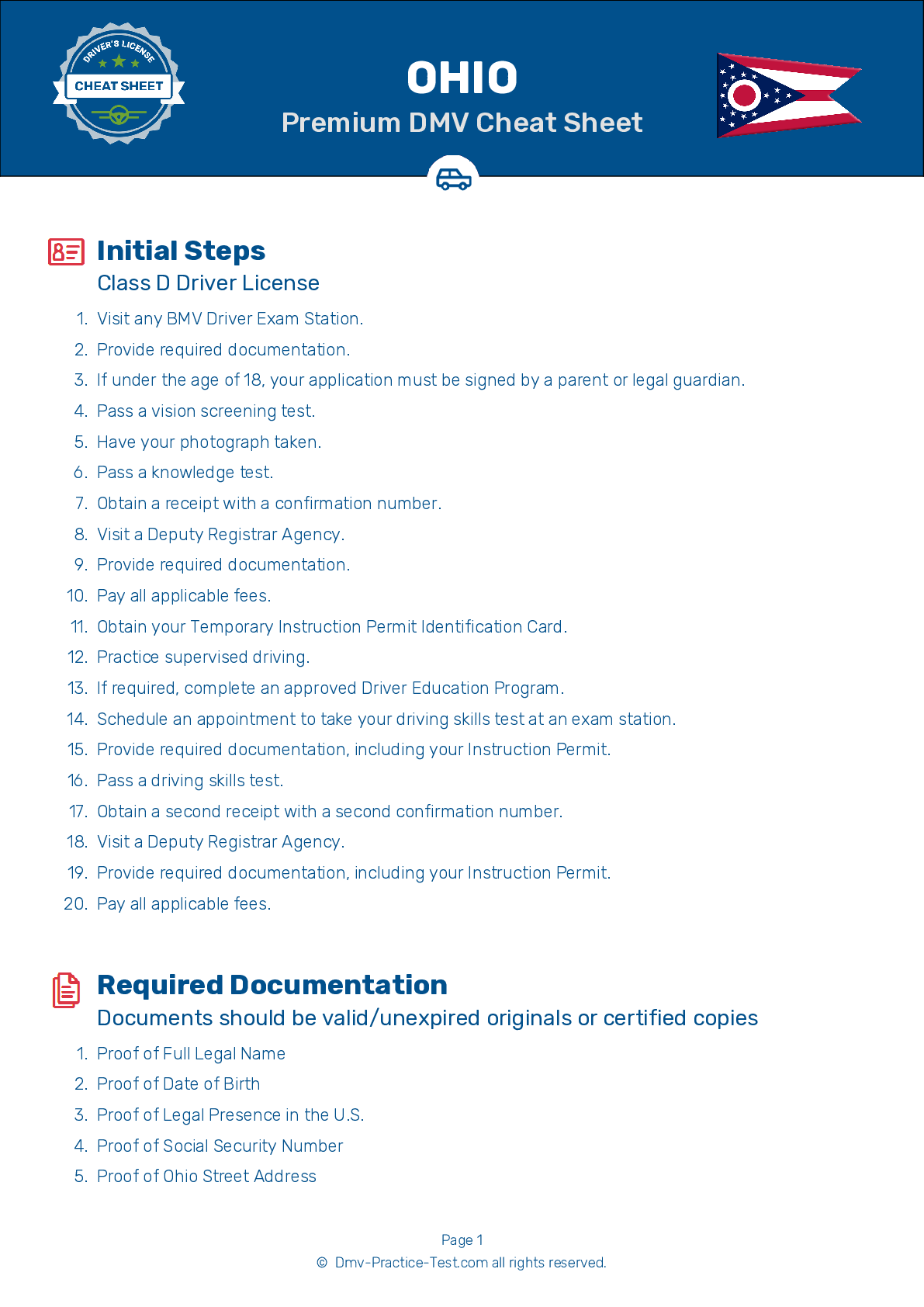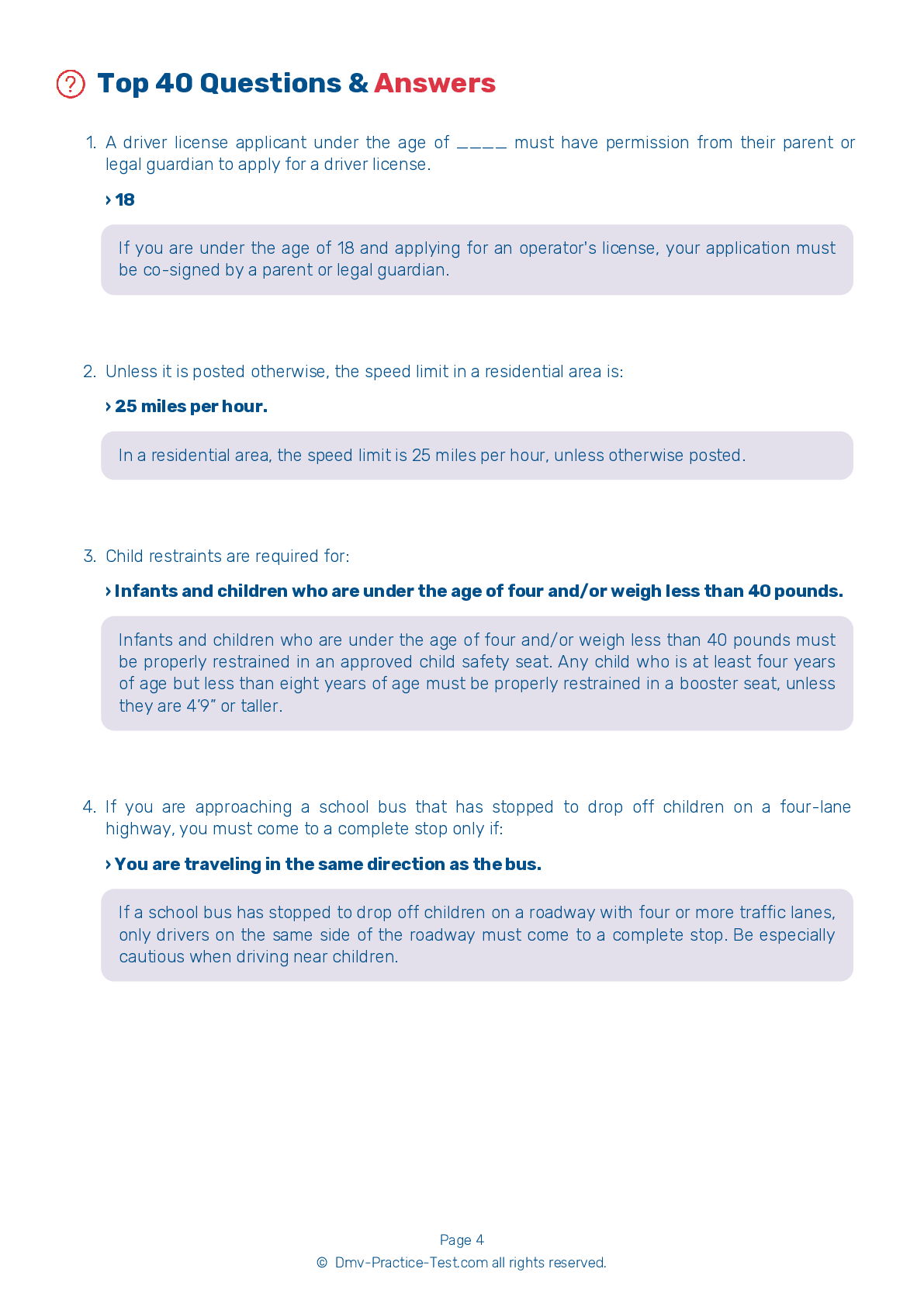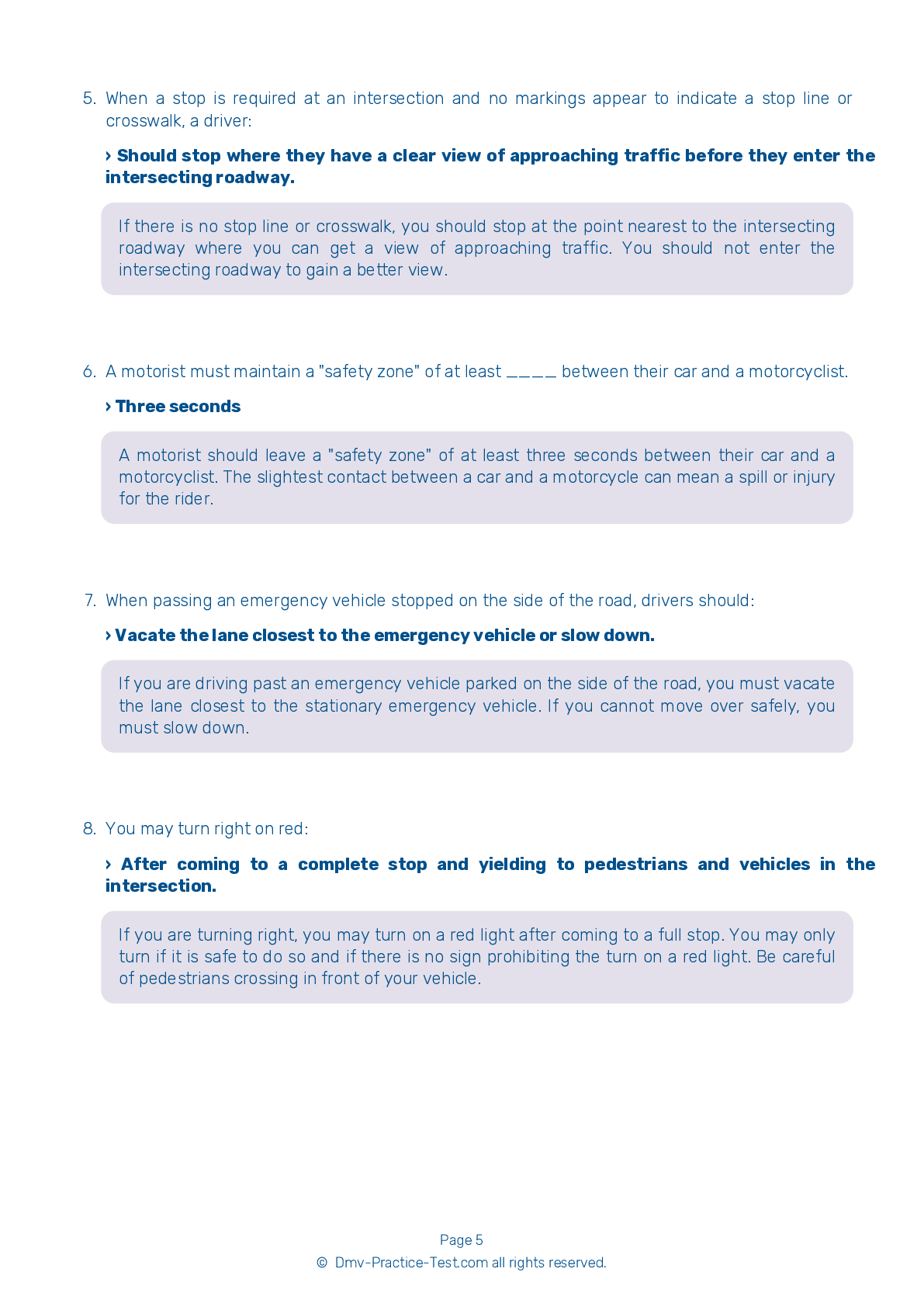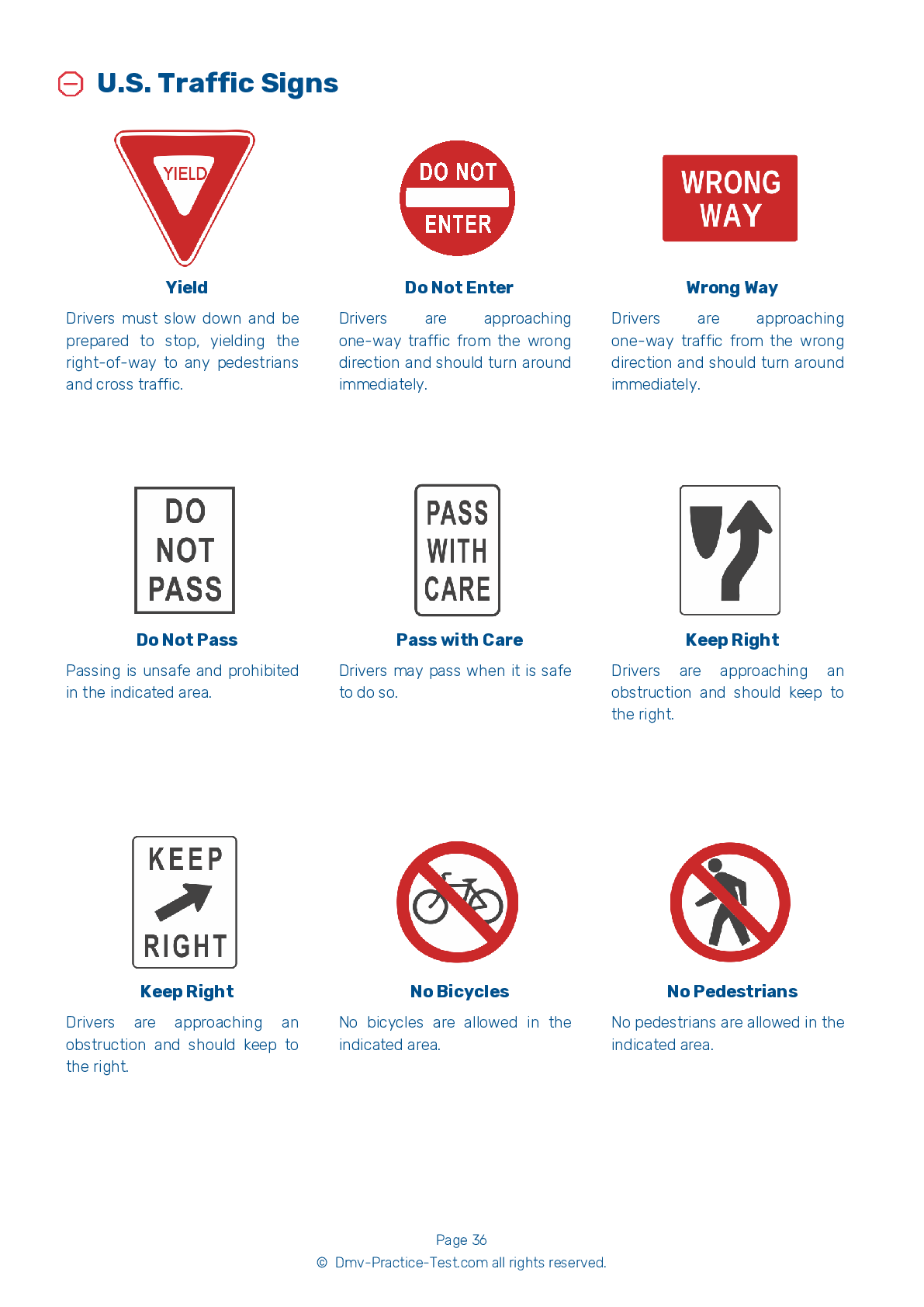FREE Ohio DMV Practice Test #12 Page 4 of 5
The practise exams for Ohio's DMV have been revised for January 2025. It comprises questions based on the most important traffic signals and laws for 2025 from the Ohio Driver Handbook. To study for the DMV driving permit test and driver's licence exam, use actual questions that are very similar (often identical!) to the DMV driving permit test and driver's licence exam.
Each question on the practise exam has a tip and explanation to help you recall the ideas. Questions about traffic rules, traffic signs, and driving statutes, as well as knowledge from the Driver Handbook, will be included in the written portion of the official Ohio DMV test.
You must properly answer 35 of the 40 questions to receive a passing mark. To help you prepare for your instruction permit or driver's licence, take this practise test from the Ohio Department of Motor Vehicles.
The DMV exam is offered in a variety of languages.
Using any form of testing help will result in an automatic fail, and the DMV may take further action against your driver's licence, so avoid it.
25 . If you are driving near a motorcycle, you must:
A motorcycle is a full-size vehicle with the same privileges as any other vehicle on the roadway. You should allow a motorcyclist a full lane width. Although it may seem as though there is enough room in the traffic lane for a larger vehicle and a motorcycle, remember that the motorcycle needs room to maneuver safely.
26 . This sign means:

Warning signs are used to warn drivers about upcoming hazardous conditions and are usually yellow with black markings. This sign tells drivers that they are approaching a school zone and that they should slow down and watch for children.
27 . This road sign means:
.png)
This sign marks parking spaces that are reserved for people with disabled parking permits.
29 . If you miss your exit on an interstate expressway:
If you miss your turn or exit, do not back up or try to turn around on the highway. Go to the next exit and safely turn around.
30 . When changing lanes, you should:
Other cars and motorcycles are often hidden in a vehicle’s blind spot, so be sure to glance over your shoulder before you begin a lane change. Begin signaling 100 feet before changing lanes or turning in a residential area. Signal five seconds in advance when changing lanes on a freeway.
31 . When is street racing acceptable?
Street racing, also known as drag racing, is illegal and can result in serious injuries or fatalities. Illegal street racers put other drivers at risk because races are typically held on public roads. Due to the high speeds, drivers are unable to react to common road hazards or other driving situations, which often results in crashes.
32 . Which of the following best ensures your safety and the safety of those around you when you are backing your vehicle?
Backing requires extra caution because it is difficult for drivers to see behind their vehicles. Before entering a vehicle to back up, walk to the back of the vehicle to check for children and small objects.
Need Car Insurance? No problem!
Compare the best rates in Ohio and find a personalized policy that meets your needs.
1. Are You Currently insured ?
2. Married ?
3. Do you own your Home?
4. Do you have more than 1 car ?
5. Have you or a Family Member Honorably Served in U.S. Military ?
6. Your Name
7. Age
8. Zip code
IMPORTANT REMINDER:Auto Insurance is Mandatory to drive in Ohio. Get covered before you hit the road to avoid any fines.
Ranked by best match
